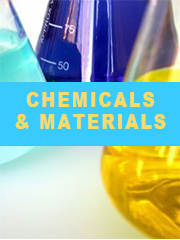TOP CATEGORY: Chemicals & Materials | Life Sciences | Banking & Finance | ICT Media

Download Report PDF Instantly
Report overview
Engineered fluids are versatile materials that are used for thermal management application. Some of the exceptional properties of these fluids include chemical stability, non-toxicity, non-flammability, high and low-temperature use, and excellent compatibility with a wide range of plastics, metals, and elastomers. Engineered fluids are used in various end-use Industries such as electronics & semiconductor, automotive, chemical processing, oil & gas, power generation, and aerospace, to reduce friction between machine parts.
This report aims to provide a comprehensive presentation of the global market for Engineered Fluids, with both quantitative and qualitative analysis, to help readers develop business/growth strategies, assess the market competitive situation, analyze their position in the current marketplace, and make informed business decisions regarding Engineered Fluids. This report contains market size and forecasts of Engineered Fluids in global, including the following market information:
The global Engineered Fluids market was valued at US$ 1143.8 million in 2022 and is projected to reach US$ 1940.9 million by 2029, at a CAGR of 7.8% during the forecast period. The influence of COVID-19 and the Russia-Ukraine War were considered while estimating market sizes.
Globally, the engineered fluids industry market is concentrated as the manufacturing technology of Engineered Fluids is relatively mature. Chemours is the biggest player in engineered fluids market, with about 19.49% of market share (revenue) in 2019. Other enterprises, like Daikin Industries, Solvay, Asahi Glass, Halopolymer, Halocarbon, 3M, F2 Chemicals, Lubrilog, and Engineered Custom Lubricants, etc. are well-known for the wonderful performance of their engineered fluids and related services.
We surveyed the Engineered Fluids manufacturers, suppliers, distributors and industry experts on this industry, involving the sales, revenue, demand, price change, product type, recent development and plan, industry trends, drivers, challenges, obstacles, and potential risks.
Total Market by Segment:
Global Engineered Fluids Market, by Type, 2018-2023, 2024-2029 ($ Millions) & (K Tonnes)
Global Engineered Fluids Market Segment Percentages, by Type, 2022 (%)
Global Engineered Fluids Market, by Downstream Industry, 2018-2023, 2024-2029 ($ Millions) & (K Tonnes)
Global Engineered Fluids Market Segment Percentages, by Downstream Industry, 2022 (%)
Global Engineered Fluids Market, By Region and Country, 2018-2023, 2024-2029 ($ Millions) & (K Tonnes)
Global Engineered Fluids Market Segment Percentages, By Region and Country, 2022 (%)
Competitor Analysis
The report also provides analysis of leading market participants including:
Key companies Engineered Fluids revenues in global market, 2018-2023 (Estimated), ($ millions)
Key companies Engineered Fluids revenues share in global market, 2022 (%)
Key companies Engineered Fluids sales in global market, 2018-2023 (Estimated), (K Tonnes)
Key companies Engineered Fluids sales share in global market, 2022 (%)
Further, the report presents profiles of competitors in the market, key players include:
Outline of Major Chapters: